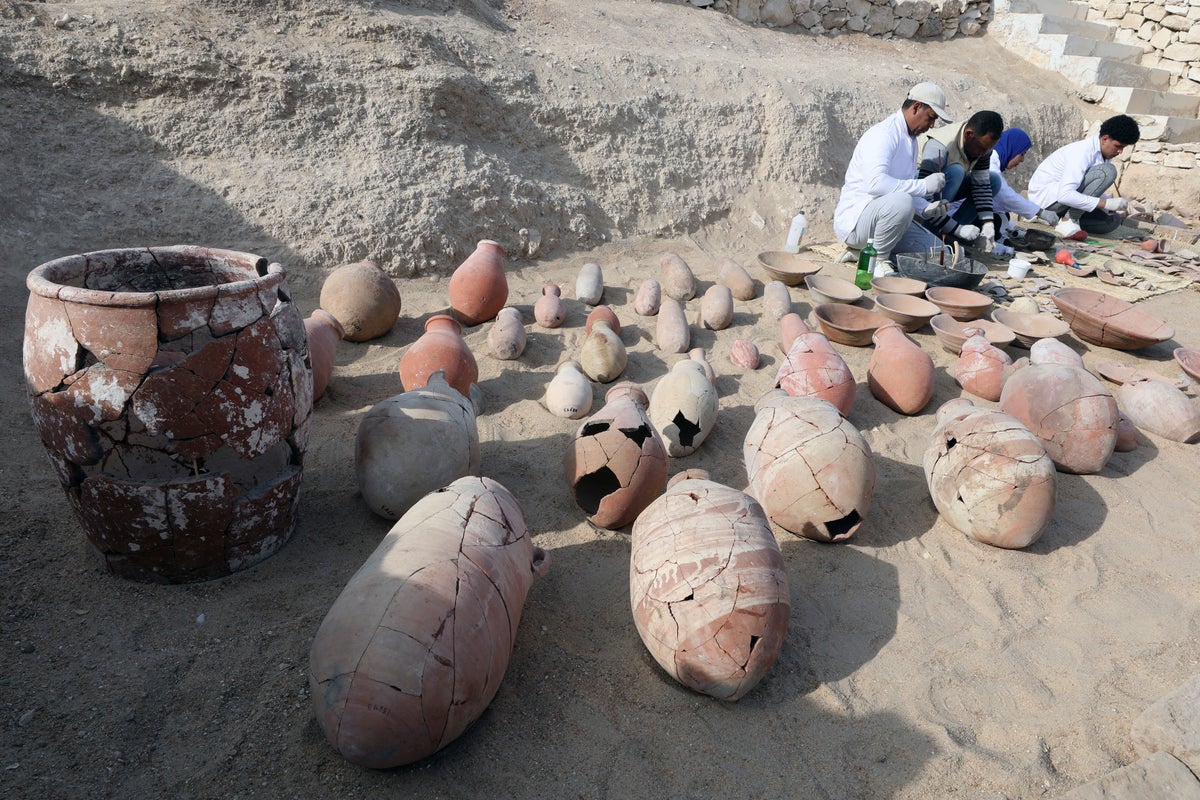Archaeologist searching for Cleopatra's long-lost tomb makes 'significant' discovery
Share:
An archaeologist on a quest to find the long-lost tomb of Cleopatra VII has made a 'significant' discovery at a site believe to be queen's final resting place. Kathleen Martinez, who has been searching for the tomb for nearly 20 years, uncovered a statue that may depict the true face of the queen who ruled 51 to 30 BC.
![[The statue and other artifacts - including coins engraved with Cleopatra's face as well as an assortment of pottery, oil lamps, figurines and more - were found at the Taposiris Magna temple complex 25 miles west of Alexandria]](https://i.dailymail.co.uk/1s/2024/12/09/17/92966705-14174415-image-a-25_1733766894606.jpg)
The white marble statue, which is just the head, features the likeness of a woman with a small nose, pouty lips and the hair braided around the head. Martinez and her team also found 337 coins bearing the image of Cleopatra, along with an assortment of pottery, oil lamps, figurines and other artifacts at the Temple of Taposiris Magna.
![[Martinez and her team also found more than 300 coins, many of which are decorated with Cleopatra's image]](https://i.dailymail.co.uk/1s/2024/12/09/18/92966703-14174415-Martinez_and_her_team_also_found_more_than_300_coins_many_of_whi-a-1_1733768431040.jpg)
The expert has long believed the queen's tomb has been hiding somewhere in the temple's ruins, which sit atop a 4,281-foot-long tunnel 43 feet underground. Martinez believes Cleopatra's body was moved from the palace through the tunnel and buried at a secret location.
![[Martinez and her team also found 337 coins bearing the image of Cleopatra, along with an assortment of pottery, oil lamps, figurines and o ther artifacts at the Temple of Taposiris Magna]](https://i.dailymail.co.uk/1s/2024/12/09/19/92970397-14174415-image-a-5_1733772751228.jpg)
However, other archaeologists have suggested that the statue depicts another royal woman. Critics of Martinez have also slammed her theory of the queen's burial, saying Cleopatra was laid to rest in the city of Alexandria, not 25 miles outside of it.
![[Martinez discovered the tunnel in 2022, which was said to resemble the Tunnel of Eupalinos on the Greek island of Samos – revered as one of the most important engineering achievements of the Classical world]](https://i.dailymail.co.uk/1s/2024/12/09/19/92970391-14174415-image-a-6_1733772754462.jpg)
Archaeologists have uncovered a statue that may depict Cleopatra VII, the Egyptian Queen famous for her beauty and intelligence who ruled 51 to 30 BC. Cleopatra ruled from 51 BC to 30 BC - right up until the day she died. She was the queen of Egypt and the last and most famous of the Ptolemaic dynasty.






















